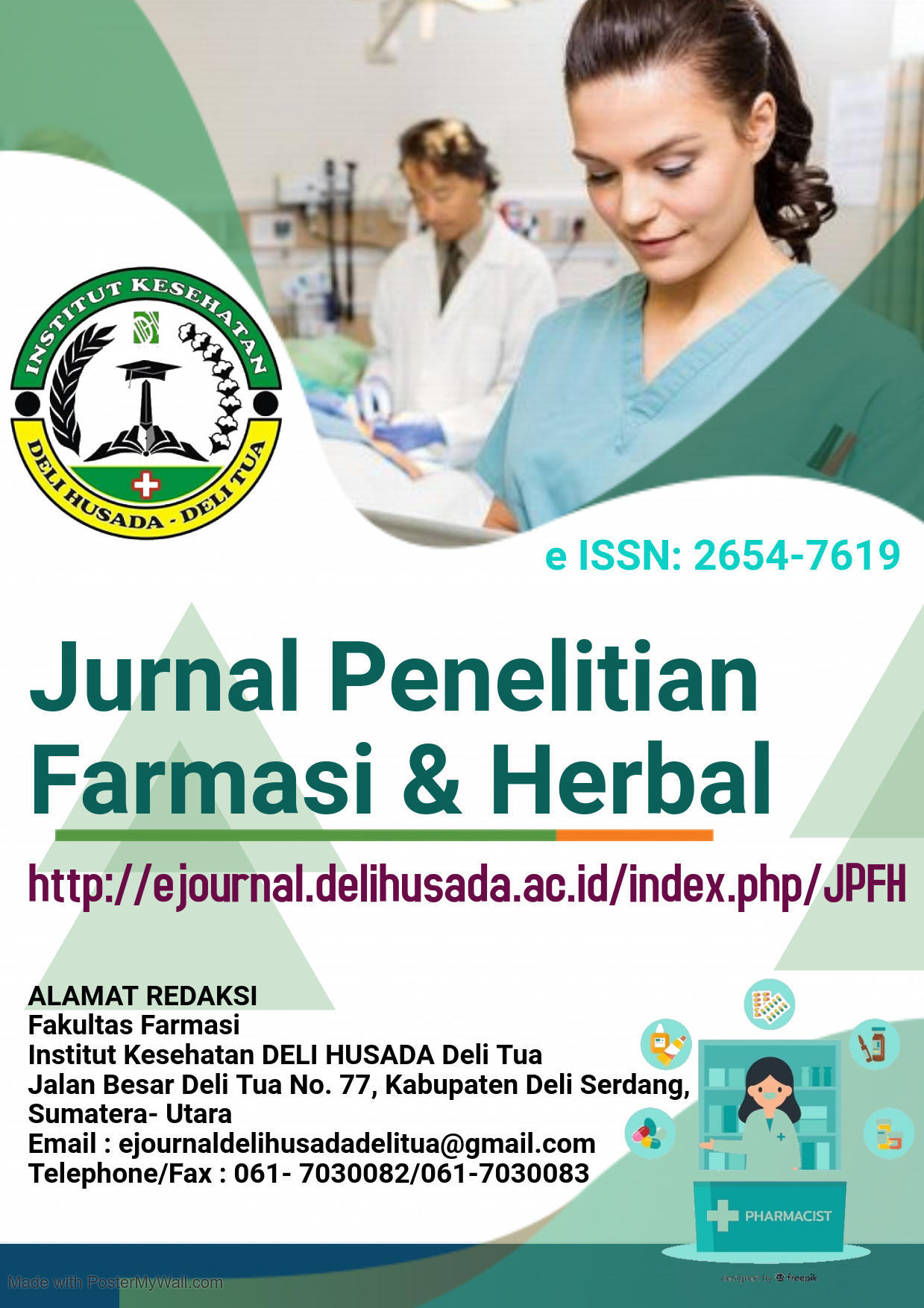FORMULASI SEDIAAN SALEP ANTI FUNGI EKSTRAK ETANOL BAWANG PUTIH (Allium sativum) TERHADAP PERTUMBUHAN JAMUR (Tricophyton mentagrophytes) SECARA IN VITRO
Abstract
Garlic contains flavonoids, tannins, and saponins which act as antifungals. The purpose of this study was to formulate an ethanol extract of garlic (Allium sativum) ointment with various concentrations of 5%, 10%, 15% and to evaluate the ointment preparation with physical evaluation requirements. Testing the activity of the ointment preparation against the fungus Trichophyton mentagrophytes was carried out by the diffusion method. The results showed that garlic (Allium sativum) could be formulated as an antifungal ointment preparation and met the requirements of the ointment preparation evaluation test with the results of the organoleptic test of the white ointment base, the 5% formulation being pale yellow, the 10% formulation and 15% brownish yellow. The homogeneity test showed no lumps in the ointment preparation, the pH test was in accordance with the requirements, namely 4.5-6.5. The dispersion test was in accordance with the requirements, namely 5-7 cm, and the adhesive data test was in accordance with the requirements, which was more than 4 seconds. The results showed that garlic (Allium sativum) ethanol extract ointment could inhibit the fungus Trichophyton mentagrophytes where a concentration of 15% produced an inhibition zone of 10.4500 mm, and as a comparison, miconazole ointment produced an inhibition zone of 14.3833 mm.
Downloads
References
Andayani, Dahlia dan Rauhul A. Kurniawan. 2013. Uji Daya Hambat Ekstrak Etanol Bawang Putih Tunggal (Allium sativum L) terhadap jamur (Candida Albicans). Jurnal Farmasi Universitas Nabdalatul Wathan Mataram.Vol.2 No.1 Hal.15-18
Anonim. 2009. Difco TM & BBL TM Manual of microbiological culture media. Second Edition. United States of America: Becton, Dickinson and Company. Hal. 444.
Depkes RI., 1995, Farmakope Indonesia, Edisi IV, 7; 9; 18; 186; 551; 687; 713; 823; 1037- 1039, Departemen Kesehatan Republik Indonesia.
Efendi, Y. N. dan Hertiani, T. 2013. Antimicrobial potency of ant-plant extract (Myrmecodia tuberosa Jack.) against Candida albicans, Escherichia coli, and Staphylococcus aureus, Trad. Med. J., 18 (1),53-58.
Gholib, D. 2009. Uji Daya Hambat Ekstrak Etanol Daun Karuk (Piper sarmentosum ROXB.) dan Daun Seserehan (Piper aduncum L.) terhadap Trichophyton mentagrophytes. Seminar Nasional Teknologi Peternakan dan Veteriner. 815-819.
Komala, O., Ike, Y., dan Rita, P. 2012. Uji Efektivitas Ekstrak Etanol Daun Lidah Mertua (Sansevieria trifasciata Prain) terhadap Khamir Candida albicans. Jurnal Ilmiah Farmasi Fitofarmaka. 2(2) : 146-145.
Lay., Bibiana W. 1994. Analisis Mikroba di Laboratorium. Jakarta: PT. Raja Grafindo Persada.
Marjoni, M. R. 2016. Dasar-dasar Fitokimia untuk Diploma III Farmasi. Jakarta: Trans Info Media Press. Hal.6,7, 15, 21.
Vradinatika, A. 2020. Kandungan bawang putih (Allium sativum) dalam bentuk ekstrak sebagai antifungi dalam uji mikrobiologi. Jurnal Kedokteran STM. 3(1) : 41- 48.







